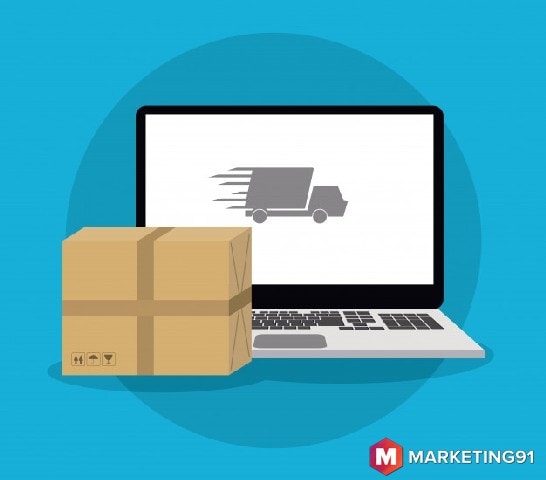A distribution system involves the delivery of material right from manufacturing, to distributors to the end customer. It consists of all the methods, procedures, equipment required for the flow of goods from a business to end-users of a product. A distribution system is an essential part of a business. The success of a business largely depends on its distribution system.
There are two important aspects of a business. One is to create or manufacture a product which is better than the similar products available in the market. Second is the distribution system. If the distribution system of an organization is sound, then it will surely generate more sales than its competitors.
A distribution system also consists of various essentials such as distributors, transportation, and the cost of distribution, etc. Each plays an important role in the success of the business. A distributor is a person who performs the work of taking your product to the market where the consumers of your product can easily buy your product.
The distributor must have in-depth knowledge about the market, such as where the demand for the product is maximum, how to increase the demand of the product in certain areas, etc. If your distributor is competitive, he will make sure that your product is available in every corner of their geographical area.
Transportation also plays an important role in the distribution system. You will have a competitive edge over your competitors if the transportation cost is lower. The lower transportation cost will reduce the selling cost because the price of a product is decided based on various factors like manufacturing cost, distribution cost, etc. In addition to this, faster transportation means you can reach your customers faster than your competitors.
The last element of a distribution system is the distribution cost, which indicates how much a company is required to pay to distribute its products in the market. It includes the transportation cost and the wages of your distributors.
The distribution of products is so important that there are people who have established their businesses just for the distribution of products of other companies. These distributors have built their networks and have distributors or C&F agents (Carrying & Forward agent) who perform the work of distribution for various businesses.
Sometimes, two competitors have the same distributors. However, nowadays, companies are investing in direct marketing to reduce the expenses of distribution.
In this article ahead, you will learn about the objectives of distribution systems and different types of distribution systems.
Table of Contents
Objectives of the distribution system

1. Availability of product in the market
Your company can never grow if your products are readily available for your customers in the market. The main objective of a distribution is to take the products within reach of its consumers so that they can buy whenever they want no matter in which part of the world they live.
The best example of effective distribution is the distribution of Maggie noodles of Nestle company or the distribution Pepsi of Pepsi Co. in the market. You can easily find Maggie and Pepsi even when you travel to the remote areas.
2. To Provide convenience to customers
Another essential objective of the distribution system is to provide satisfaction to customers. People buy products based on factors like the quality of products, availability in the market, and the price of products.
If your market is not easily available in the market, your customers will settle up for lower quality products of your competitors. Therefore, along with keeping the excellent quality of products, you should also take care of the convenience of your customers to find your product.
3. To reduce the cost
An effective distribution system helps in reducing the overall cost. The cost of your products will also be lowered if you are spending less on transportation and distribution of your products.
4. Distribution of goods
Proper distribution of goods as important as the production of the goods. There are a few companies that have their outlets in a different part of the world. Whereas some companies prefer to sell their products to retail store owners who sell them further to final consumers. It is important to know the total number of retail stores in a particular area if you are planning to sell through a retailer.
The benefit of having a business connection with them is that they will choose to sell your products over the products of your competitors. Most importantly, once you have a tie-up with these store owners, it becomes your responsibility to follow up and keep their stock full so that they don’t lose any sales.
5. To maximize sales
More retailers to sell your products means more sales. Therefore, it is important to distribute your products effectively to maximize your sales.
The sales of your product will automatically boost if your product is available in all the nearby retail stores of your customers.
6. To enhance competitiveness
An effective distribution system helps in increasing the competitiveness of your business. Competitors compete with each other based on the quality of the product, price of the product, and the reachability of the product.
The quality and price of your product will depend on certain factors but can control the distribution of your product. You can give competition to your competitors by distributing your products effectively, even if your product is of lower quality. Because most people settled for convenience over the quality of a product.
7. To control inventory
A proper distribution system helps you in managing the inventory. A manufacturer is not required to keep finished goods in stock if there is an effective distribution team to distribute their products.
By doing this, they can reduce total inventory cost and the overall working capital.
8. Promotion of products
A good distribution system will also help in the promotion of your products. Your distributors will meet retailers and make them aware of the existence and the qualities of your product.
Therefore, along with the distribution of products, they will also promote your products for you.
Here is a video by Marketing91 on Distribution Systems.
Types of distribution systems
The sole purpose of a distribution system is to make available products for your consumers. Choosing the right distribution system is vital for your business as it influences the price of the product.
In this section of the article, you will learn about the different distribution systems. After reading them, you can choose which distribution system is right for your business.
1. Direct Sales
The direct sales can be defined as the sales of products directly from the manufacturer to the buyer without the involvement of any distributor or middleman. This type of distribution system is right for products that are neither too expensive nor too cheap. The price of products falls in the middle range and which are not bought by consumers on an everyday basis. For example, a person will purchase an air purifier once in 5 or more years.
Through direct sales, a seller communicates with customers himself and delivers the product to the customer without any intermediator. In the present times, with the inclusion of the Internet in business the direct sales have become quite popular.
The benefit of using direct sales is that you get a chance to connect with your customers directly. You can learn about their needs and demands, and you can use the information obtained from them to modify your product to serve your customers better.
2. Wholesalers and Retailers:
This type of distribution system involves selling products to the middlemen, who further sell these products to the final consumer. Selling through wholesalers and retailers is an excellent way to reach a large number of customers.
This type of distribution system is good for both expensive and inexpensive items, but the items with a shelf life of at least 1 or 2 days. In this method, intermediator buys products from the manufacturer by taking the risk if products do not sell well. This type of distribution system is quite popular as by adopting this method, a manufacturer is not required to focus on the distribution and marketing of the product.
He can keep his focus on the manufacturing of products only. The benefit of using this type of distribution system is that the customers already trust the wholesalers and retailers as they already have done business with them. Their already built trust will help in the sales of your products.
3. Distributors and brokers:
When you sell your product through distributors and brokers, you give them a certain amount of commission on the total sales that they have made. This method is beneficial to make available your product in remote areas.
This method is the most expensive type of distribution system, and businesses that have a significant margin usually, adopt this method. Moreover, this method is also utilised by new companies when they try to establish their business in the market. This distribution method is popular in the food industry.
Liked this post? Check out the complete series on Distribution
